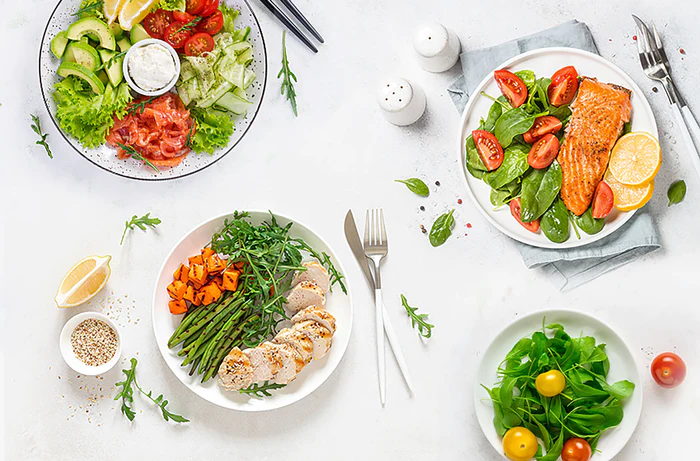Here's a glimpse at the questions Dr. Barry Sears was recently asked for an interview with Elle Magazine in July 2018.
1.How and when did you come up with the idea of the Zone diet?
I started to develop the Zone Diet in the late 1980’s as a better dietary way to control the levels of the hormones (eicosanoids) that drive inflammation. The 1982 Nobel Prize in Medicine was awarded for understanding how these hormones were controlling factors in causing systemic inflammation throughout the body that caused chronic disease and accelerated the aging process. Thus, the Zone Diet was developed as an anti-inflammatory diet to be followed for a lifetime.
2. What are the main basics of this diet?
The balance of protein and carbohydrate at every meal generates a unique hormonal response. To keep that hormonal response in a therapeutic zone (like a drug) requires trying to maintain that appropriate protein-to-carbohydrate balance as consistent as possible at each meal. The unique aspect of the Zone Diet is that it is not based on calories consumed, but your levels of protein consumed required to maintain your muscle mass. That amount of protein is unique to every person and depends on their existing muscle mass and levels of physical activity. Once you determine that overall level of daily protein required, you split into relatively equal amounts at each meal. At each meal you balance that protein in a meal with about one-third more carbohydrates (primarily non-starchy vegetables and limited amounts of fruits), and finally add a dash of monounsaturated fat like olive oil. If you do this correctly you would have a caloric balance of about 40% carbohydrates, 30% protein, and 30% fat. It is this ratio that optimally stabilizes blood sugar levels as well as reducing the inflammation in the fat cells to allow the body to release stored fat for energy. As a result, you are never hungry or tired. Although the number of calories consumed on the Zone Diet is about 1,200 to 1,500 per day, the remaining energy for daily activities comes from the released of your stored body fat. This makes the Zone Diet a calorie-restricted, protein-adequate, carbohydrate-moderate, low-fat diet. More than 30 clinical studies under carefully controlled conditions have demonstrated the superiority of the Zone Diet to reduce inflammation, lower lipid lipids, and stabilize blood sugar. This is why the recommendations of the Joslin Diabetes Center at Harvard Medical School to treat diabetes is essentially identical to the Zone Diet.
3. What are the foods one should limit and why so?
You want to limit carbohydrates that cause a rapid increase in insulin levels. This would include bread, pasta, grain, and starches as well as limiting the intake of saturated fats and omega-6 fats since both can cause increased inflammation.
4. What are its favorite foods (and why)?
The preferred foods on the Zone Diet include low-fat protein such as chicken or fish, low-glycemic carbohydrates such as non-starchy vegetables and fruits, and olive oil or nuts. These are the primary ingredients found in the Mediterranean diet. One could consider the Zone Diet to be the evolution of Mediterranean diet to deliver superior hormonal control.
5. A typical Zone diet-day from morning to evening?
Breakfast is the most important meal of the day since you are on empty from an overnight fast. A Zone breakfast might be some Greek yogurt with 15 grams of almonds. Lunch could be grilled vegetables as an appetizer, grilled fish as the entree with fruit for dessert. Dinner might be grilled chicken, with grilled or roasted vegetables, and some fruit for dessert. Snacks might be a small piece of fruit with a piece of cheese or a glass of red wine with a piece of cheese. In every meal or snack, the protein is constantly balanced by carbohydrates to generate the appropriate hormonal responses.
6. How does the Zone diet help people being fit?
Being fit or being well depends on your level of inflammation. The Zone Diet is an anti-inflammatory diet that reduces excess body fat without loss of muscle mass. This is why more than 25 Olympic Gold Medalists have used in the Zone Diet is past five Olympics.
7. Are supplements important in this diet?
There are two parts to inflammation. You first have to reduce the intensity of inflammation, and then resolve the remaining inflammation to repair tissue damage. The Zone Diet is the most effective way to reduce the intensity of inflammation, but it is not as effective in the resolution of the remaining inflammation. The resolution of inflammation requires a different set of hormones derived from omega-3 fatty acids and the repair of the damaged tissue requires the intake of polyphenols to activate the genes required for tissue repair. To get adequate levels of these nutrients requires supplementation with high-dose refined omega-3 fatty acids and refined polyphenol extracts. When these supplements are coupled with the Zone Diet you now have a complete dietary system to keep inflammation in a zone that generates a longer period of wellness with increased physical performance.
8. What are the main benefits of a long-term Zone diet?
The main benefit is better control over your future health in order to live a longer and better life. It also helps manage chronic conditions by its reduction of inflammation that is the underlying cause of all chronic disease. This leads to healthy aging.
9. What should change between men and women following the Zone diet?
The only difference between men and women is the amount of protein they require to maintain their existing muscle mass. Men will need slightly more protein than women, however, the balance of their remaining calories remains the same. Likewise, elite athletes will also need more protein than the average person because of their increased muscle mass and levels of physical activity, but their balance of calories also remains the same.
Have any questions for Dr. Sears? Let us know in the comments below or contact Zone Customer Service at customersupport@zoneliving.com







Let Us Know What You Thought about this Post.
Put your Comment Below.